Original author:waynezhang.eth
Original author:LSDFi Ecology/LSDFi War Reportas well asas well asImpact of Shanghai upgrade on LSD
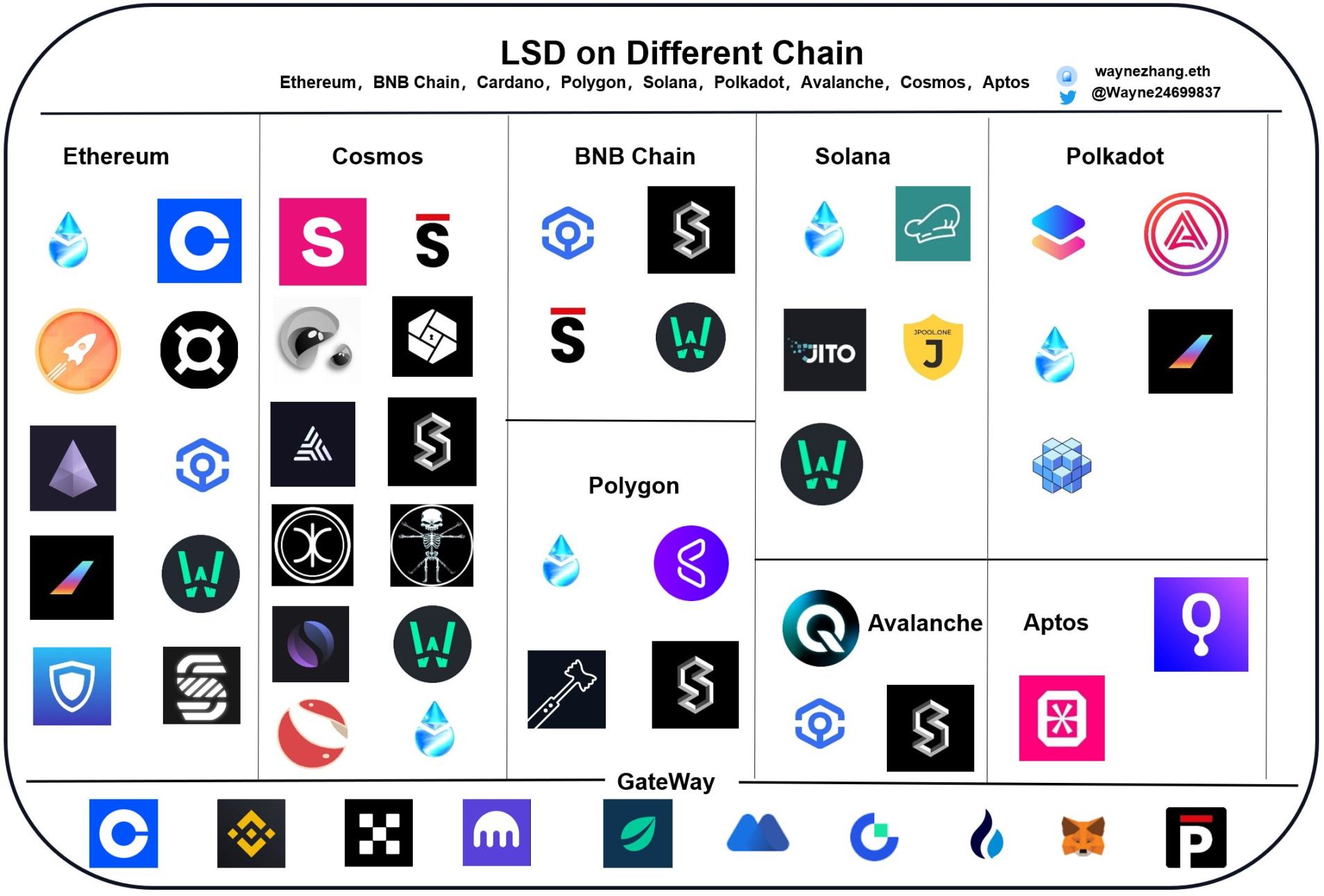
BNB Chain
report, but both the selected project and the background of thinking are Ethereum. This is because the volume of funds brought in by Ethereum liquidity staking alone exceeds 14 billion US dollars. Today's report will explore the development and gameplay of LSD in other public chain ecology, and observe the development of other ecological LSD from the data side, the development trend, the impact of the data on the LSD industry, and the LSD product design and justice. discuss. The survey public chains will include: BNB Chain, Cardano, Polygon, Solana, Polkadot, Avalanche, Cosmos, Aptos (part of the top 25 public chains sorted by Coingecko MC).
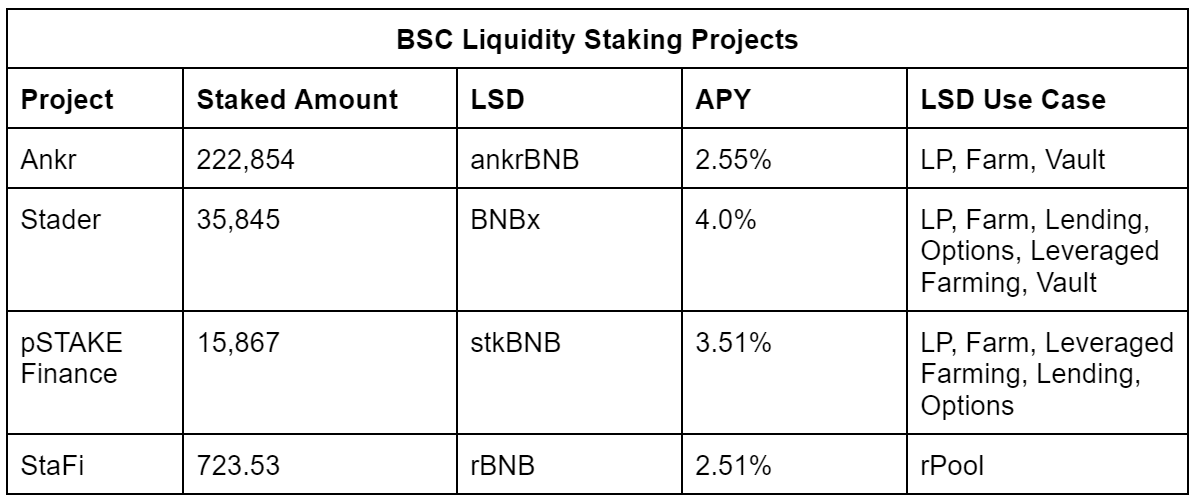
The current staking status of BNB is similar to that of Ethereum, with a staking rate of 15.44% (Ethereum is about 15.43%), and the current staking average annualized return is about 2.84%, which is relatively low. Among them, Ankr, the largest decentralized pledge platform of BNB Chain, accounts for about 0.56% of the circulation.
I think the reasons for the slow development of BNB Chain's LSD are as follows:
1. The profitability of BNB’s native DeFi protocol, as can be seen from the DeFillama data, among the 337 trading pairs involving only BNB, the average annualized rate of return accounts for 80%, not to mention the various DeFi protocols on the chain. Most of them are far exceeding the pledge rate of return
2. BNB Utility
① BNB is also the platform token of the Binance exchange. Holding BNB and placing it on the exchange can obtain discounts on handling fees and other services
② At the same time, Binance has its own dedicated Launchpad and other services, which attract users to put their BNB in their wallets or exchanges. Taking the recent Space ID launchpad as an example, the total amount of BNB invested reached 8,677,923.94 pieces, and the number of participants reached 103. 598 people. This amount is nearly 39 times Ankr's total stake.For transactional holders, whether it is to obtain fee discounts on Binance or participate in various DeFi products on DEX, the income and stability are higher.
Cosmos
In BNB Chain, the potential for LSD is much smaller than that of ETH chain.
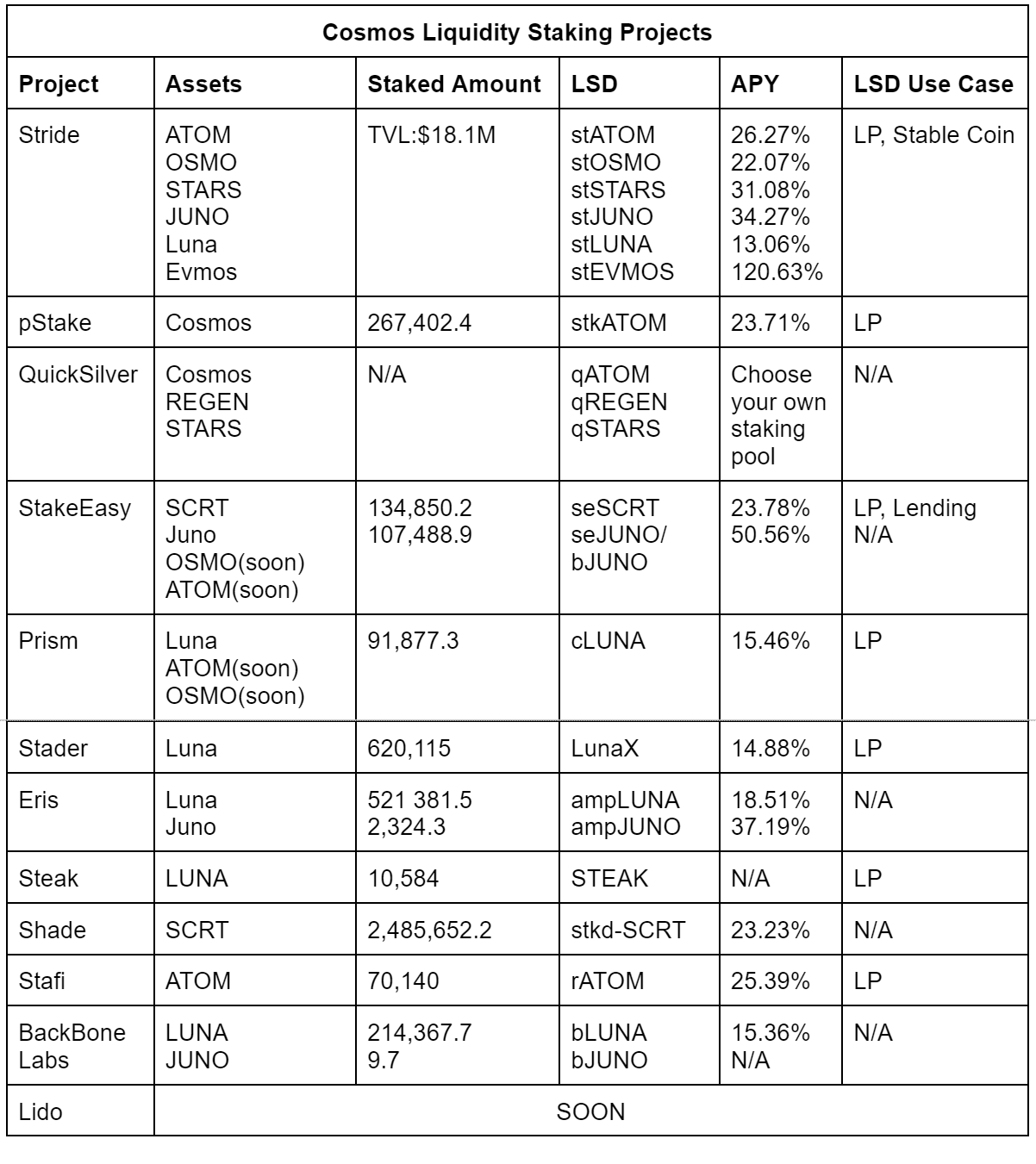
The pledge rate of Cosmos Hub is about 61.96%, and the average pledge income is about 25.92%. After pledge, you need to wait 21 days from the time of application to release the pledge. Compared with the ETH and BNB chains, the pledge status of Cosmos is very technical. Since ATOM is only used as a token of Cosmos Hub, any application chain launched in the Cosmos ecosystem does not need to use ATOM tokens. Because the fee logic is native to each AppChain (what token the developer chooses to pay for gas), each AppChain has its own network of validators. Therefore, we can’t just use the protocol on the ATOM chain as the basis for statistics. Stride, QuickSilver, etc. have their own chains for protocol construction, so we will count the LSD protocol on Cosmos and its ecological IBC chain (mainly focusing on ATOM , OSMO, STARS, JUNO, Luna, Evmos).
From the above table you can see two interesting points:
The Cosmos ecology is now a separate one. The scale of LSD is very small, and there are not many LSD application cases. As the current leader of Cosmos LSD, Stride has a total TVL of only $15 M
Luna appears in many LSD items and has many types of LSD
1. Why is LSD small in scale?
① The Cosmos ecology actually has many similar L1 chains, but these ecology cannot get out of Cosmos for the time being. Cosmos is not a unified public chain, but a chain with special functions and Appchain through the IBC protocol, such as Kava and Osmosis. For general chains such as Canto, Juno, and Evmos, the ecology is in its infancy.
On March 2, 22, LUNA with a value of more than US$30 billion was pledged on various protocols, surpassing ETH with a pledge value of US$28 billion, becoming the second largest pledged asset in mainstream cryptocurrencies. At that time, Lido also participated in the design of bLUNA, an LSD, but the Luna-UST incident occurred later. At that time, Terra had a rich infrastructure, and LSD could be used as UST collateral, loans, etc.
② Opportunity cost: Overall, the high rate of return brings opportunity cost. Taking ATOM as an example, if the holder does not pledge ATOM, then his opportunity cost is about 26%. You can check the liquidity list of Osmosis , there are only three ATOM LPs above 26%. Of course, there are other high-yield methods, but they are not as stable and safe as direct pledge. This also creates a vicious circle: low DeFi utilization rate → lower returns than pledged → users reduce DeFi participation → low DeFi utilization rate
③ Airdrop: Stride, Quicksilver and other Cosmos projects usually airdrop a certain proportion of tokens directly to Cosmos token ecological pledgers when they go online. According to my investigation, the conclusion is that the pledge in LSD does not seem to be airdropped. So the opportunity cost is further increased.
④ Liquidity risk: After ATOM is pledged to LSD, it takes 21 days to unlock and arrive at the account (Stride shows 21-24 days), not only LSD, but also pledged nodes are affected by this.but
Cosmos LSD still has extremely great prospects
1. Cosmos 2.0: Inter-chain security will promote ATOM as a security token for other IBC chains. With the enhanced composability of inter-chain account ATOM, Cosmos will soon support the liquidity staking function, thereby improving the liquidity of ATOM . The value of ATOM will further increase, which will have a direct impact on the prosperity of DeFi in the ecosystem
2. Osmosis and Kava's DeFi are already working hard to develop, and they will build more lending and income infrastructure for LSD. For example, SiennaLend accepts seSCRT as collateral. New LSD protocols, such as Quicksilver, will airdrop to attract more holders' attention.
3. Stride and Quicksilver can provide governance functions such as proxy voting. In the past, voting was done by entrusted nodes, but now they can be directly entrusted to LSD, and then let LSD count the stakers to choose proxy voting
4. Liquidity benefits: The 21-day pledge unlocking time can obtain capital efficiency through LSD
5. External factors: The LSD War brought about by the upgrade of Ethereum Shanghai will directly promote the influence of LSD and indirectly promote the development of Cosmos LSD
6. Cosmos is ready to launch the Liquidity Staking Model (LSM)
If you want to know more about the technical differences of the Cosmos ecological pledge agreements, please go tohere。
If you want to know the history of Cosmos LSD development, please go tohere
Polygon
here

The Polygon pledge rate is 39.92%, and the average annualized return is 8.82%. Polygon POS is an EVM-compatible sidechain, in which Matic acts as Gas and is pledged to nodes to complete the POS consensus. 12% of Matic will be used as staking rewards.A very interesting point, Lido on Polygon turned out to be the highest APY, and I searched on DeFillama, MATIC trading pairs, among the trading pairs with TVL above $10 M, stMatic involves four, the direct consequence of this impact
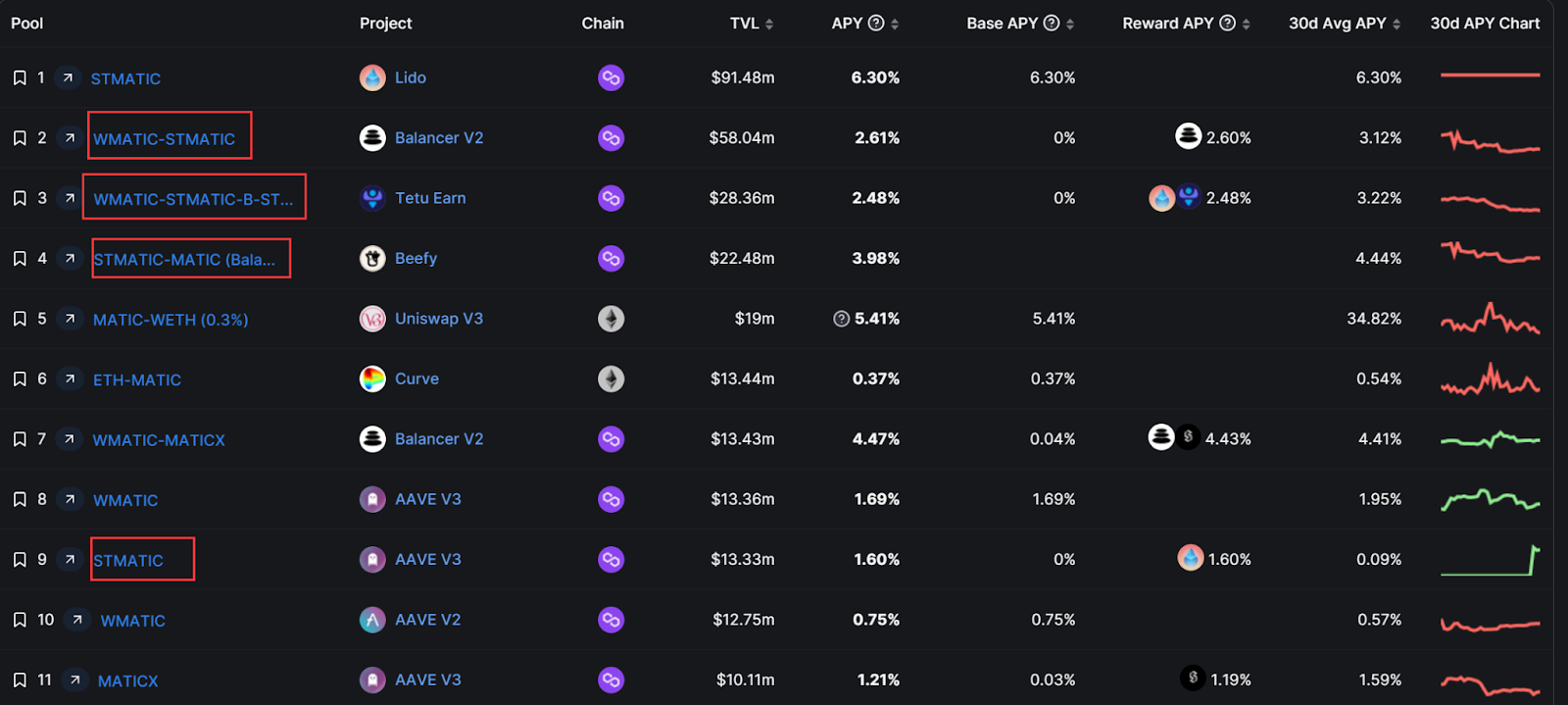
Solana
Possibly Lido's current and future Polygon LSD's dominance.
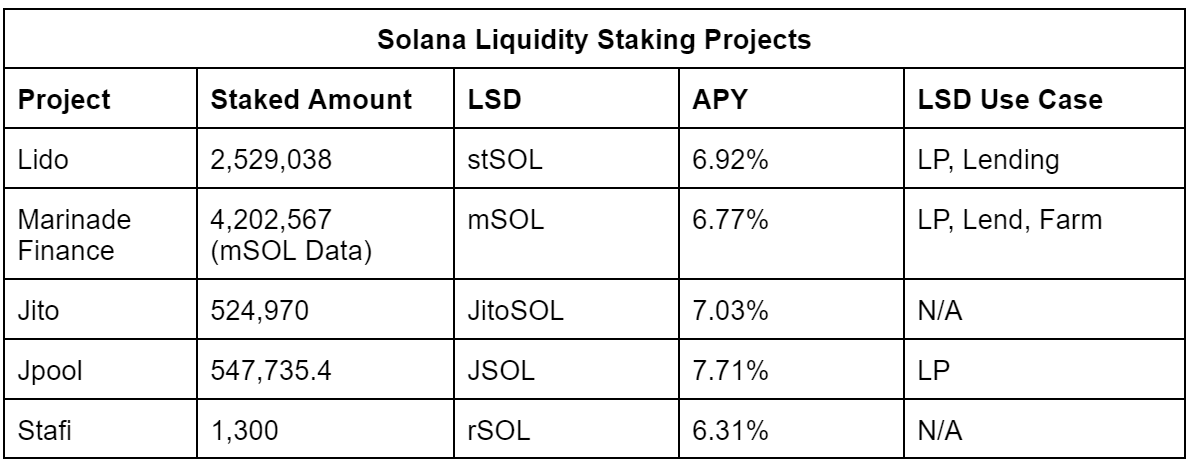
Solana's network pledge rate is 70.75%, and the average annualized rate of return on pledge is 70.75%. Solana has 3165 verifiers, and the verifier with the largest number of delegates only accounts for 2.86% of the total pledge amount.During the statistical process, the TVL of aSOL, Eversol, Socean and other LSD projects has been declining since May 22, and the Twitter account has been canceled and cannot be found.The ending is embarrassing.
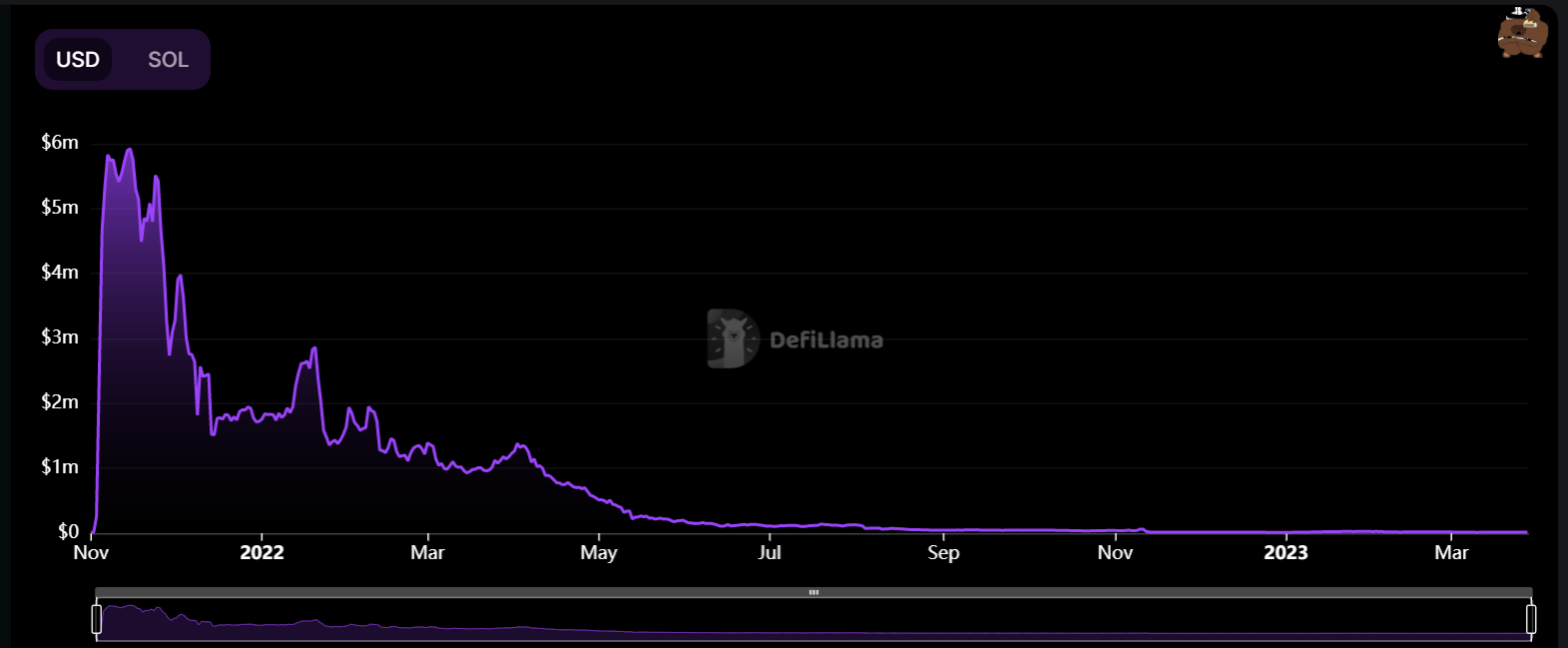
Cardano
New entrants headed by Stader may bring new developments to Solana LSD.

Cardano's current staking rate is 68.73%, and the average annualized return on staking is 3.26%. A drop of 7.1% since my last Cardano ecology report (December 18: 74.05%). But TVL is about to break out of its previous high in ADA terms.Cardano's special technical architecture makes it difficult for LSD to develop in its ecosystem.
ADA will not be locked for a certain period of time or need to be transferred to a mining pool during the pledge period. After the user pledges to SPO, SPO cannot touch your assets, and their fees are deducted from the total rewards generated by the pledge pool, which means that Cardano's pledge is not only non-custodial but also flexible. And users can also pay while staking or use them in DeFi services, such as iUSD collateral.
Avanlanche
Another point is that Cardano is not confiscated, and user assets will not be lost due to improper behavior of SPO. When the SPO operation makes a mistake, the network will cancel the reward of this era, and the reward drop caused by multiple mistakes will lead users to leave this unqualified mining pool. However, the average annual rate of Cardano operators is 4.99%, which is about 35% higher than that of ordinary staking users. This has attracted many users to do SPO directly, and the threshold is low. There are currently 3,206 staking pools.
Avanlance's network pledge rate is 62.05%, and the average annualized return is 8.48%. The technical architecture of Avanlanche is that the main network is divided into
C Chain (Contract Chain): Smart Contract Platform for Applications
P chain (platform chain): used for pledge and delegation of AVAX, using UTXO technology
X chain (transaction chain): the chain used to transfer funds, with a fixed transfer fee

The default way for non-technical users to participate in chain security is the pledge center on Avalanche Wallet. Staking through this venue only involves using the P chain and locking AVAX. After locking, it takes 21 days to resolve the pledge. After delegating AVAX, the verification reward will be accumulated to the P-chain address you provided. So what the LSD project has to do is to use the alternative assets on the C chain to issue synthetic alternative assets for pledge positions. Therefore, there is a certain technical difficulty in this, and the LSD design contract is required to connect the AVAX of the P chain and the LSD of the C chain. I've only found two LSD projects so far, of which Benqi's sAVAX is the decisive leader.
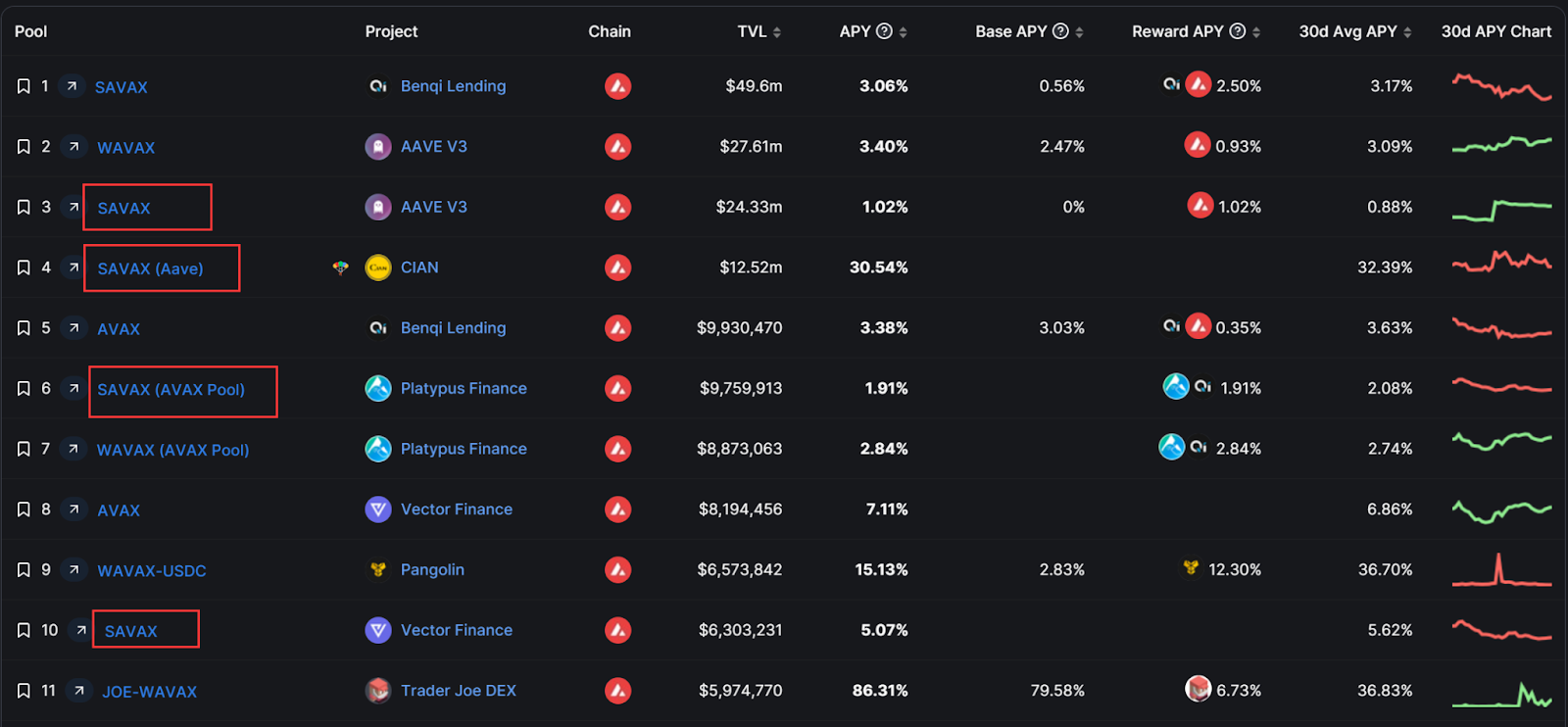
LSD leader Benqi occupies 1.7% of the circulating AVAX, and sAVAX is very liquid, whether it is lending (revolving lending improves returns), LP and other DeFi products are quite a lot.
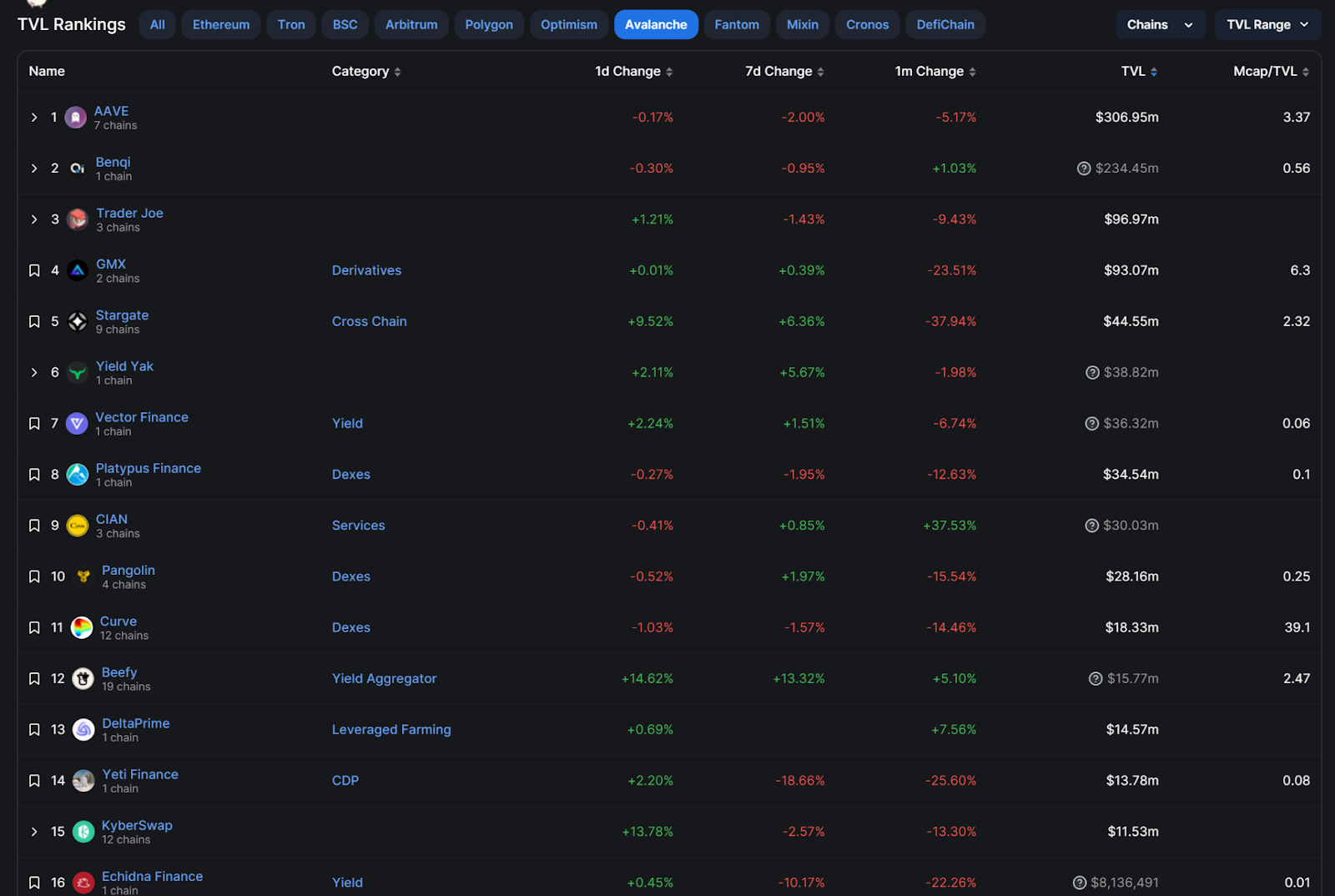
However, Avanlanche’s DeFi is developing better. Leaving aside Wonderland at $635.75 m, the TVL is also close to $830.91 m. Various DeFi products can be found in Avanlanche. Avalance’s DeFi competitive landscape has a unique point: AAVE, Curve, and Beefy among the Top 15 DeFi are entrants, among which AAVE directly took 36.95% of the market share, and the original lending Bneqi has developed multiple business scales and is less than AAVE 80% of the total, while its own ecological GMX, Stargate chooses multi-chain development, and it is also flourishing in other chains, such as GMX, which directly becomes the boss on Arbitrum, accounting for 32.96%. And the TVL is less than 100 M, and the development is faulty. The TVL difference between GMX and Stargate is more than half.But why is there so little LSD? Apart from technical reasons, thisThe DeFi landscape may also be an influencing factor,
If you want to know the specific pledge mechanism of Avanlanche, please go tohere。
Polkadot
here
The pledge rate of Polkadot is 47.05%, the pledge annualized return is 15.29%, and the pledge is locked for 28 days. Polkadot's consensus mechanism is NPOS (Nominated Proof of Stake), which has two roles: verifier and nominator. The verifier needs to run the verification node, and the nominator obtains income by selecting an excellent verifier and pledges DOT to support the verifier's work while protecting network. If the nominated validators follow the network rules to maintain network security, the nominators can share the staking rewards they generate. Conversely, if the verifier misbehaves, the verifier will be fined and the user will lose the DOT reward.Another feature of PolkaDot is its card slot auction mechanism: it allows multiple dedicated blockchains to communicate with each other in a secure, trustless environment, thereby achieving blockchain scalability. Parachains are connected to the relay chain, which requires parachain slots. A simple understanding is that the relay chain is a socket, and the parachain is an electrical appliance. The limited socket holes need to be competed through auctions, so the project invented Crowdloan (PLO). . However, projects that do not participate in the auction can also use the Parathread mechanism. Compared with the parachain, the difference is that this requires a pay-as-you-go, and the parachain is unlimited free to use. The picture below shows some cases of PLO. Due to the existence of Crowdloan,
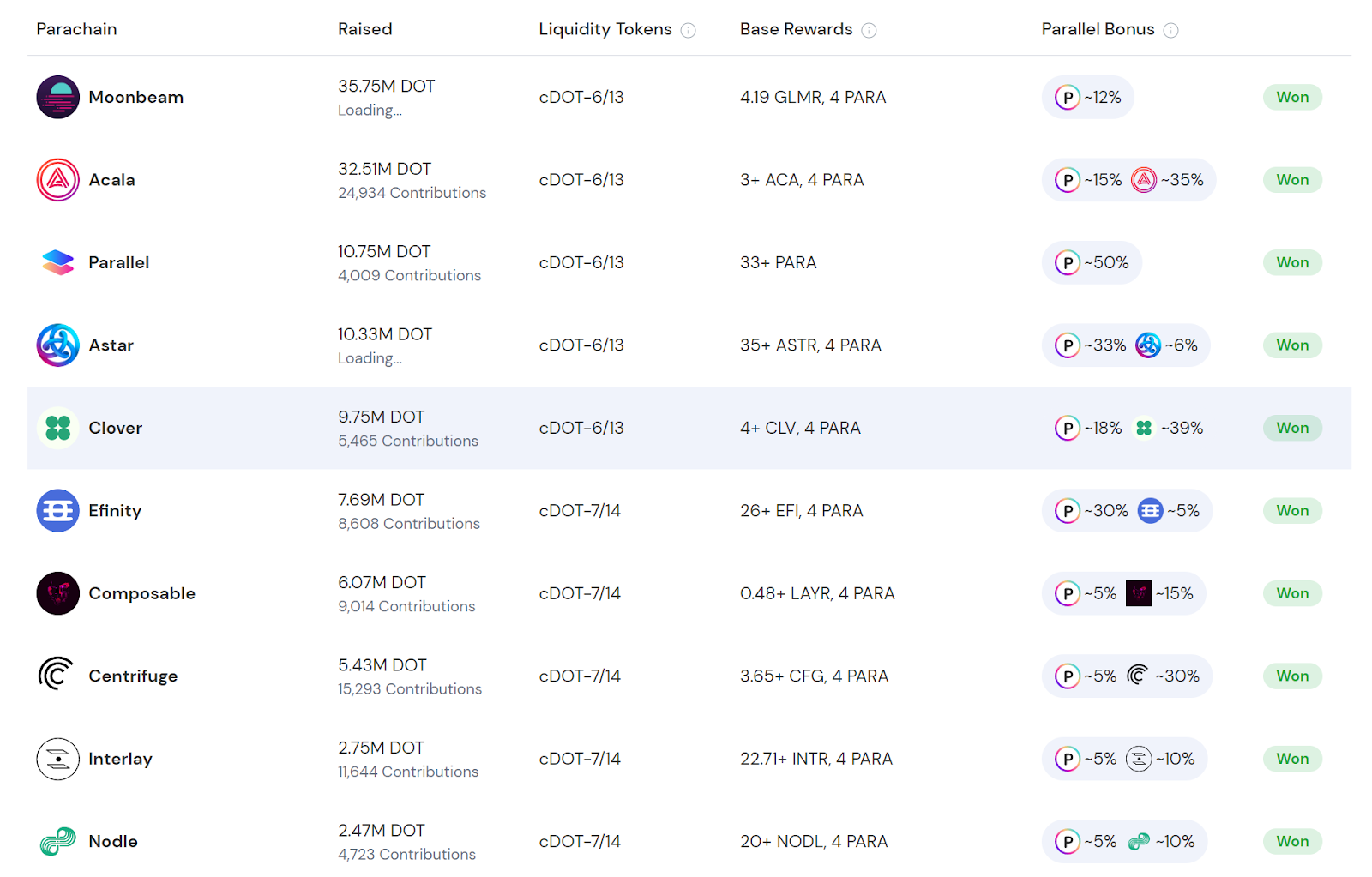
In terms of yield, LSD is not attractive enough, and many DeFi are built around PLO.
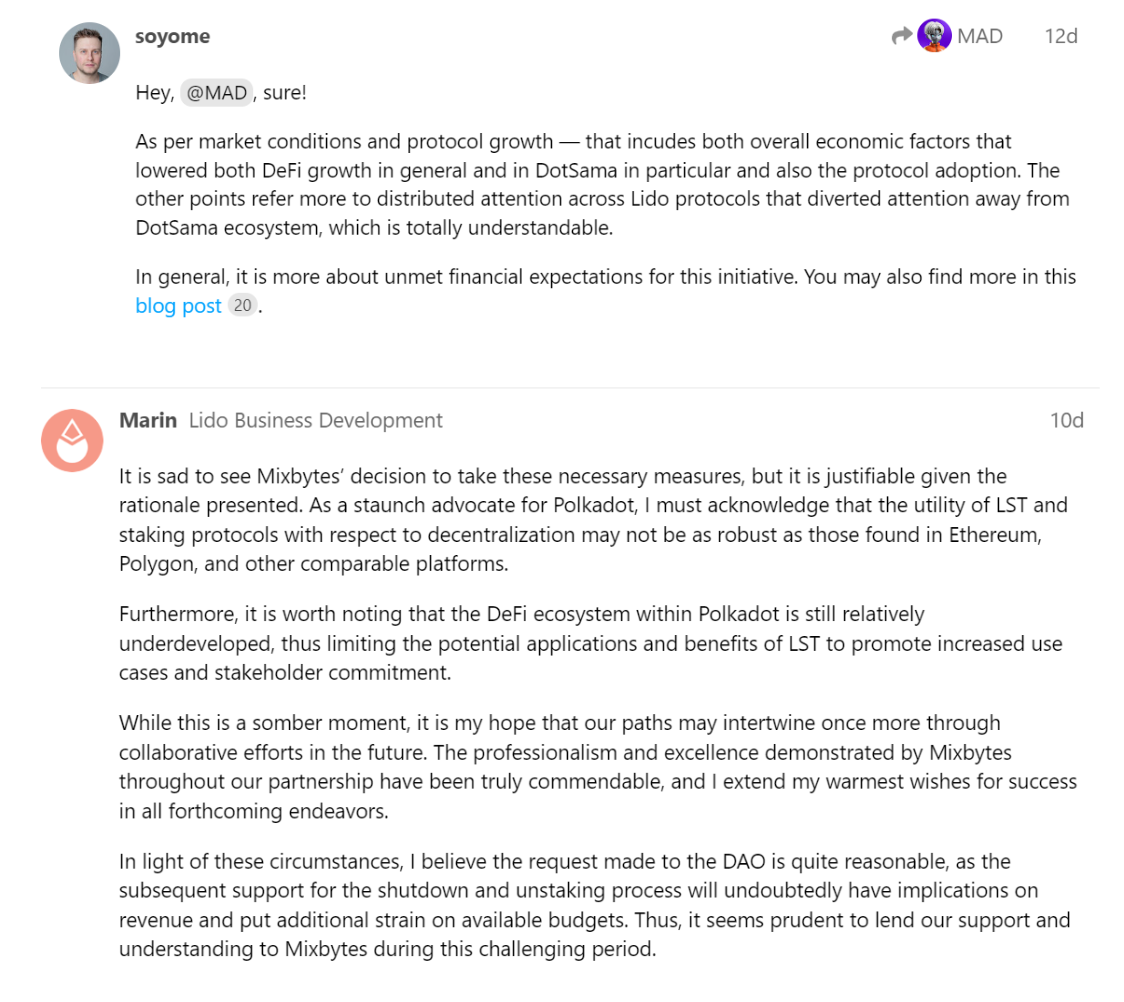
Lido officially suspended Polkadot and KSM pledge deposits on March 15th. I checked the proposal at that time, and the proposal initiators soyome (Head of Lido's partner MixBytes) and Marin (Lido's BD) commented as follows:《State of Polkadot Q4 2022 》It probably means that the DeFi ecosystem within Polkadot is still relatively underdeveloped, limiting the potential applications and benefits of LSD and having some market and operational issues. Because the PolakaDot ecology is relatively complicated, I only conducted a simple research on it, and did not delve too deeply into the reasons for its ecological development. But when collecting data, many articles about Polakadot and crowdlending were published in 21 and 22, and there are indeed very few new articles recently. Report published by Messari
Aptos
Maybe it will give us some answers.According to the data from Aptos Explorer, Aptos’s node pledge accounts for 82.5% of the $APT supply, and the average annualized income of miners is around 7%. During the investigation, we actually found many Aptos-related LSD projects, but most of them are After October 2022, their Twitter updates will be stopped, and the websites of these projects will not be open for the time being, and the current TVL of Aptos DeFi is only $37 M, and the corresponding LSD base agreement is even less. And from the LP pools of Pancake and Liquid Swap, the APY of the highest pool can reach 10% + (whUSDC-tAPT LP), and the rest are below 2.78%. but

In theory, both Aptos and Sui belong to the Move ecosystem. The LSD protocol can manage both APT and SUI. The Sui mainnet will be launched in Q2. Will it promote the DeFi development of the Move ecosystem and create more infrastructure and use cases for LSD? ? It's something to look forward to.
Summarize
Summarize1. From the multi-chain planning of Lido, Stader, Bifrost and other LSDs, it can be seen that the multi-chaining of LSD business is an inevitable trend. Only from the perspective of pledge, as long as the POS mechanism is used, LSD can be created theoretically. However, from the cases of the above projects,
The vast majority of LSD projects should start with a certain chain or a certain ecology before starting to do other public chains.
2. Operational issues: In the process of organizing data, the UI experience of many LSD projects is very poor. In addition, the LSD of many projects has many Use Cases, but does not tell users how to use them, and the overall UX experience is very poor.3. CEX is a factor that must not be ignored,
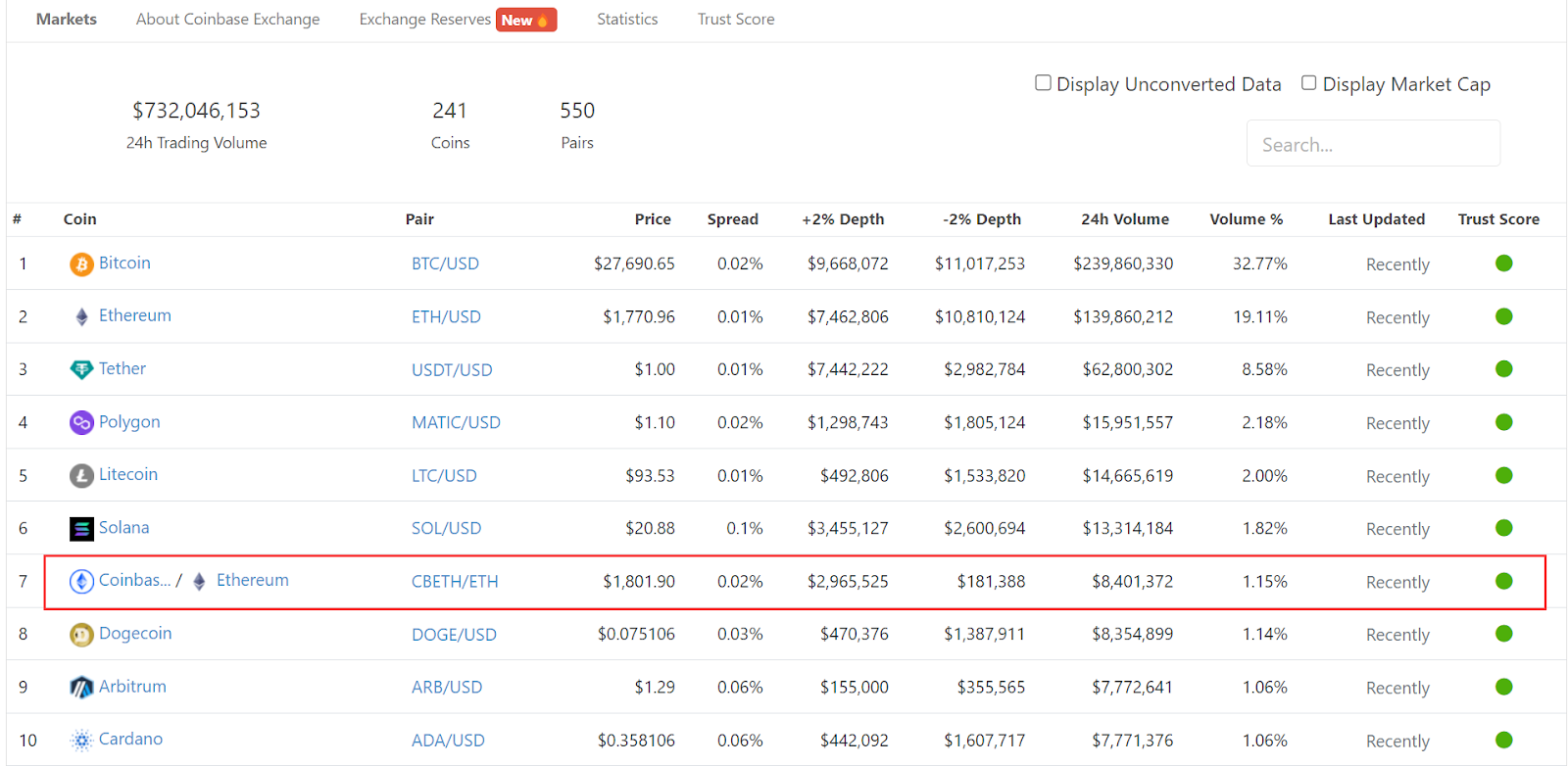
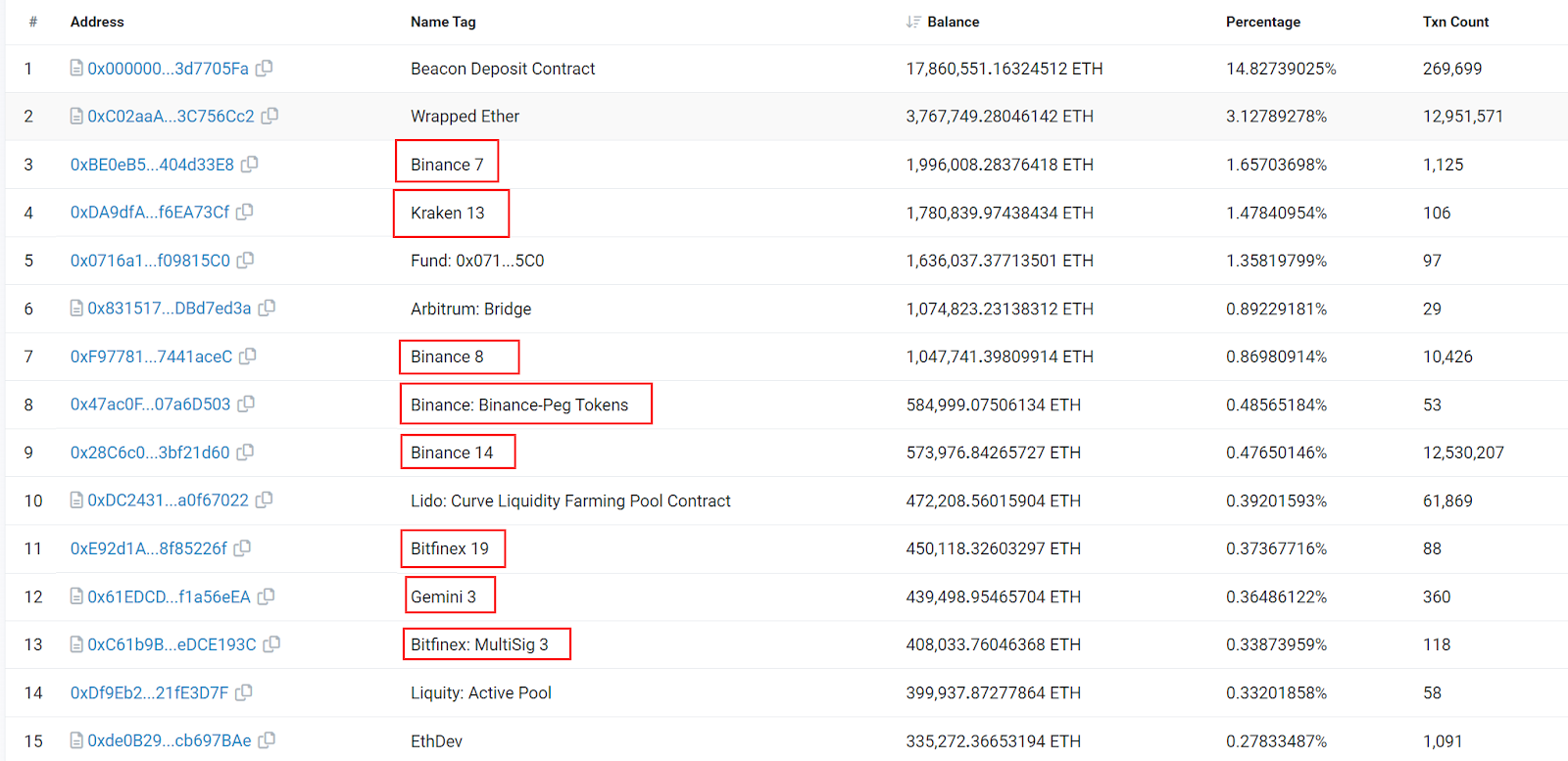
As the largest traffic portal of Web3, it is also the gathering place of various Tokens. Taking Coinbase as an example, the transaction volume brought by CBETH-ETH alone is as high as $8.4 M. In addition to liquidity, this will also affect token speculators’ interest in the LSD track. More attention.4. The suspension of some LSD protocols after the launch of the Aptos main network also reminded us, please pay attention to the LSD protocol in the new L1s/L2s ecosystem that will be launched soon,Choose sustainable projects
Invest your own assets.5. FVM has been launched recently, and LSD solutions such as SFT, MFIL, STFIL, and HashMix are ready to go online.
LSD has become an essential DeFi protocol for the public chain.6. Earning reward share through LSD, or accessing LSD Pool and LSD DeFi products can provide real income. For comprehensive DeFi,
The LSD business may become a new revenue growth point for old DeFi.7. MetaMask announced the opening of the Ethereum pledge function in January, which is currently a Beta test version. In Cosmos, the Keplr wallet is the entrance for many people to pledge assets. Cardano also has a similar wallet entrance for pledging SPO. The BD of the LSDFi project may be able to
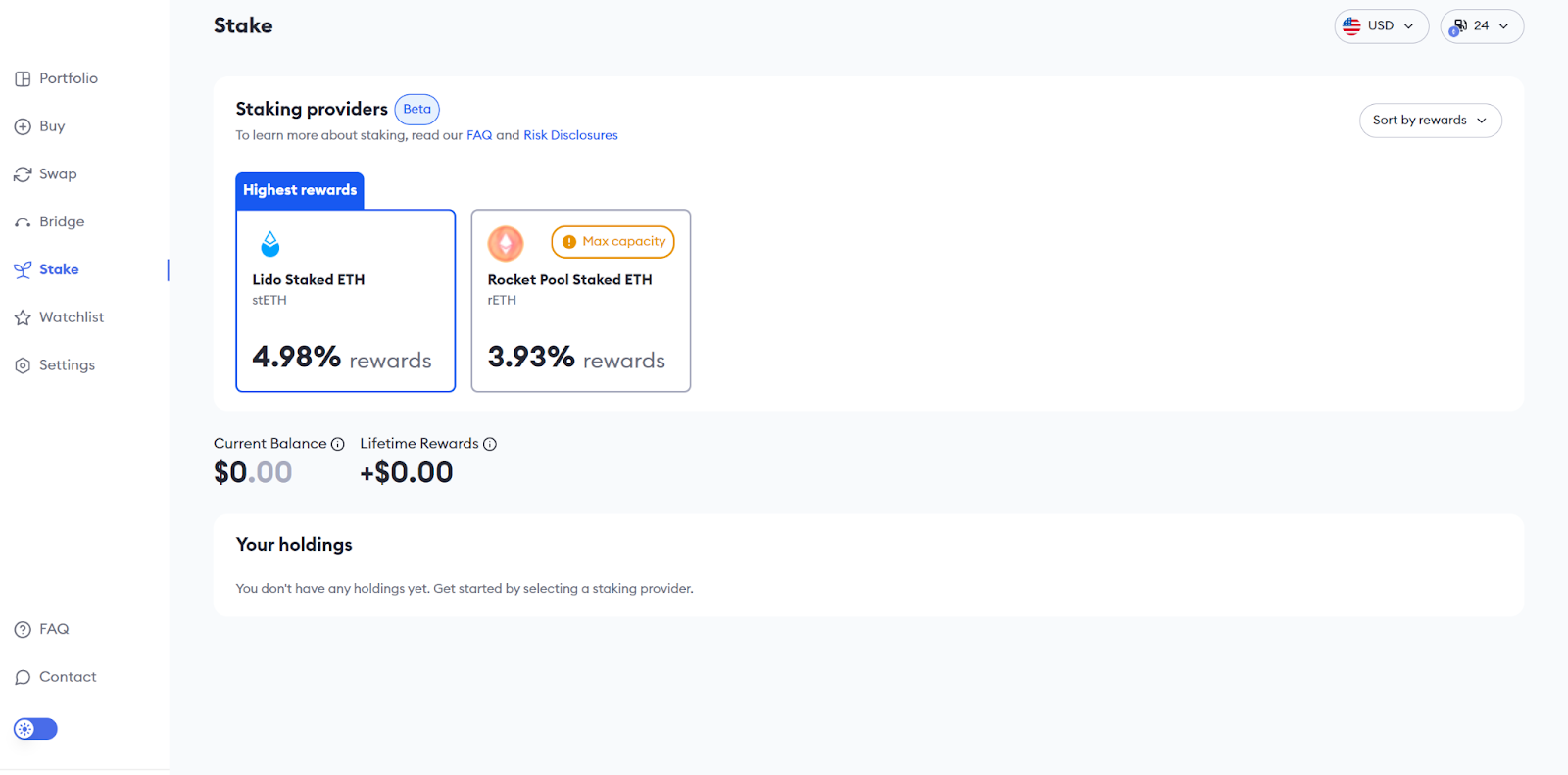
Put the partner on the wallet side.
Discussion (subjective point of view area)Regardless of the various analyzes I have done before, it is based on one point: will holders pursue stable and high returns? but overlooked one point:The correctness of the pledge, participation in governance and maintenance of network security,
The main pledge purpose of POS or the modified POS mechanism is to maintain network security, but in fact, the decentralized distribution of nodes and the basic distribution of Tokens have been determined in the initial financing link of most public chains and the test network stage. The second is governance. Cosmos' Stride and Quicksilver's proxy voting solutions are a good case, gaining benefits and participating in governance.
Is it necessary for LSD to combine to obtain income? I can't answer directly, but two cases come to mind:
① In some small African countries with backward financial facilities, what you should worry about is currency inflation, but if you are on Wall Street, you will think more about creating higher financial instruments and financial products.② There are many Tokens with negligible utility on the market, which can be calculated to exceed a scale of about 100 billion. Behind LSD is the second most valuable currency in the encrypted world, ETH, which can carry more product development in terms of actual value and stability. Why give up the huge market of LSD?
Now the bear market ETH FDV has more than 200 billion US dollars, so how big is the imagination of LSD?
③ Is LSD of other chains necessary? Yes, LSD can promote an ecological network pledge, improve network security, and at the same time provide liquidity for DeFi and promote the development of DeFi within the ecosystem.The biggest influencers in the LSD battle are probably node operators and CEXs,
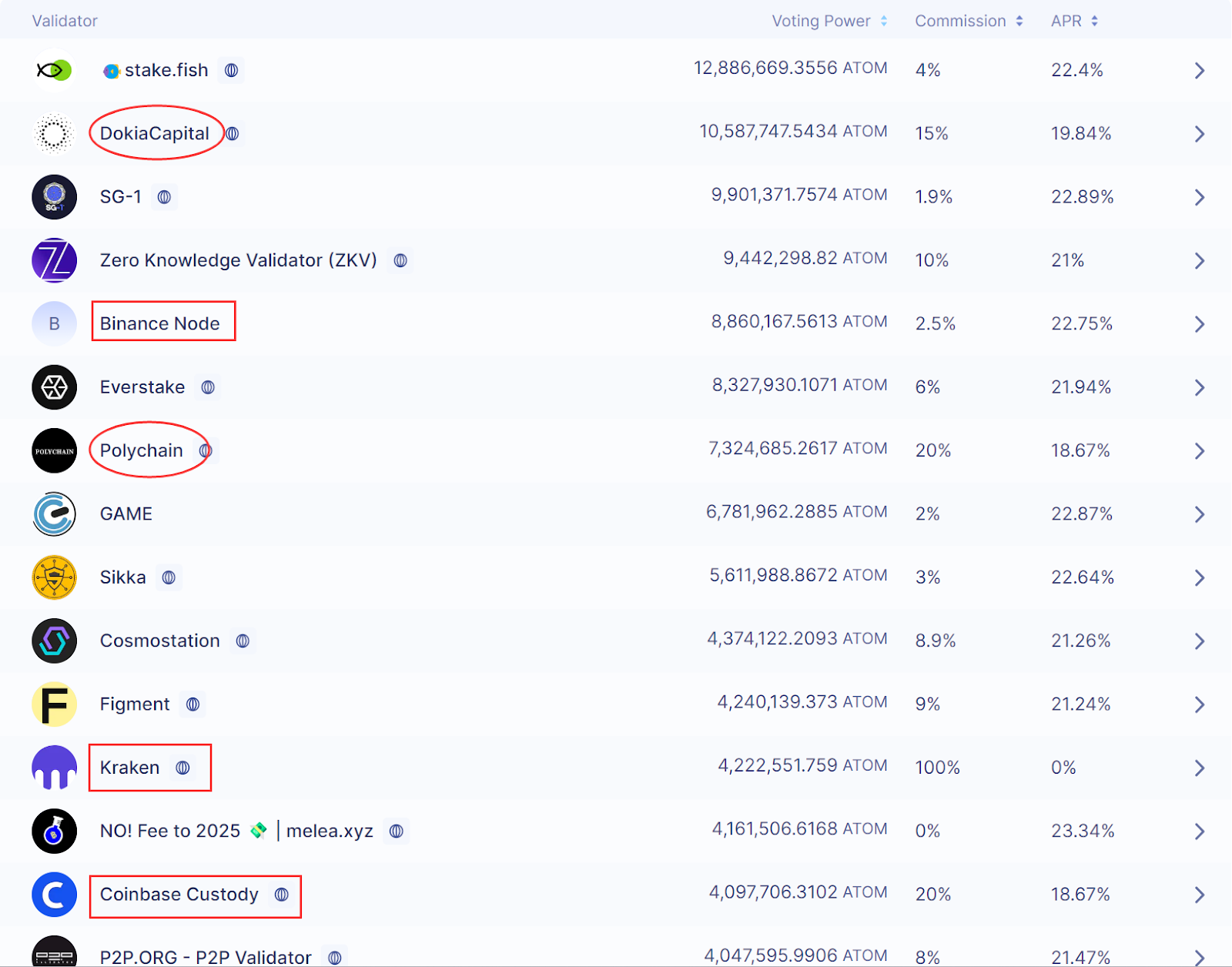
Can non-POS network native assets be used as LSD? I didn’t find a suitable case, but I have an idea. There is no need to maintain network security. It may be possible to design by using governance rights. After the Token is locked, it becomes xToken. xToken represents the asset redemption right after a certain period of time, and can also be bound to governance , if this agreement determines the distribution of income through governance, then it can develop products based on xToken to determine the income and so on.
refer to:
refer to:
Staking status: Staking Rewards,
The status of each blockchain browser project: Defilillam, public chain official website, Twitter, Google
Project data: official website data of each project, Coingecko
Other reference materials: KOLs Thread, various blogs and articles



